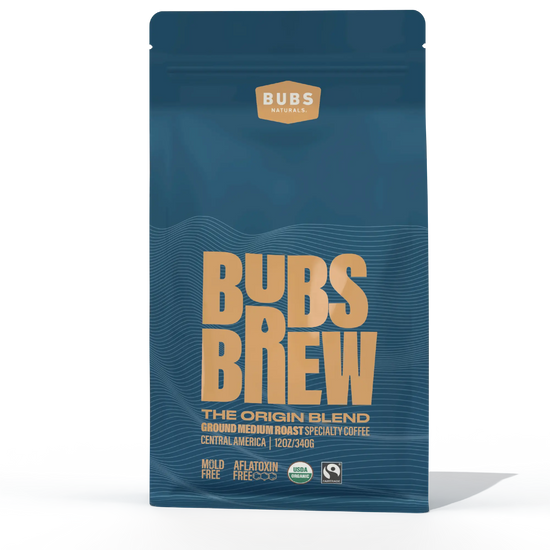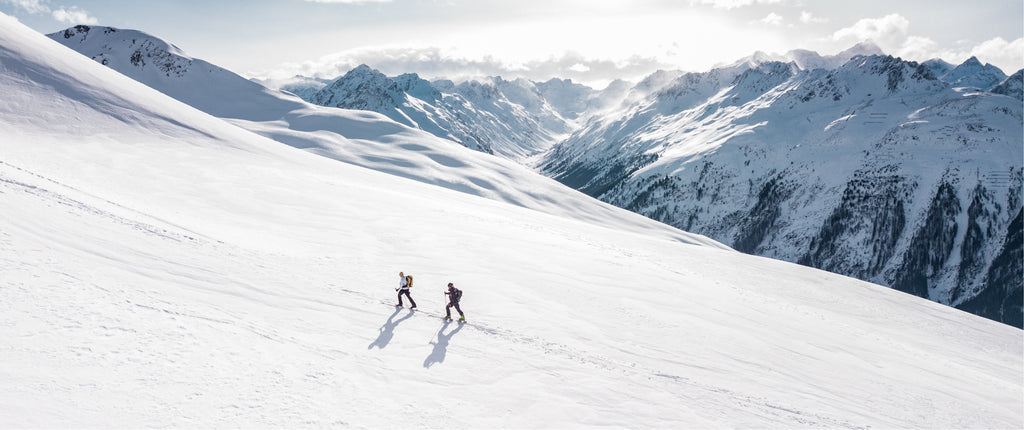Table of Contents
- Introduction
- Understanding Coffee Grinding
- Can You Grind Coffee Beans in a Blender?
- How to Grind Coffee Beans in a Blender
- Advantages and Disadvantages of Grinding Coffee Beans in a Blender
- Alternatives to Grinding Coffee Beans in a Blender
- Conclusion
- FAQ
Introduction
Picture this: it’s early morning, and you’re yearning for that perfect cup of coffee to kickstart your day. You head to the kitchen, excited to brew a fresh pot, only to discover that your coffee grinder has mysteriously vanished or, worse, it’s broken. What do you do? Panic? Not quite! You remember that trusty appliance sitting on your countertop—the blender. But can you grind coffee beans in a blender? Let's explore this often-asked question and uncover the ins and outs of using a blender for this purpose.
Grinding coffee beans at home is an essential step for coffee lovers seeking the freshest brew. The grind size directly impacts the flavor and extraction of your coffee, making it crucial to achieve the right consistency. While dedicated coffee grinders are the gold standard, many people wonder whether a blender can serve as a suitable alternative. In this blog post, we will delve into the practicality of grinding coffee beans in a blender, the techniques to do so effectively, and the potential outcomes.
By the end of this guide, you’ll learn:
- Whether a blender can effectively grind coffee beans.
- How to use your blender for grinding coffee.
- The advantages and disadvantages of this method.
- Tips for achieving the best grind for your brewing method.
- Alternative methods for grinding coffee beans when you’re in a pinch.
So, grab your favorite whole beans and let’s dive into the world of coffee grinding!
Understanding Coffee Grinding
Before we get hands-on, let’s briefly discuss why grinding coffee beans is so essential. When coffee beans are ground, they release oils and flavor compounds that contribute to the coffee's taste. The size of the grind affects how quickly these compounds are extracted during brewing.
The Importance of Grind Size
-
Extraction Rate: Finer grinds have a larger surface area, allowing for quicker extraction. This is ideal for methods like espresso, where a quick, intense brewing process is required. Conversely, coarser grinds are better for methods like French press, where longer steeping times are needed.
-
Flavor Profile: Inconsistent grind sizes can lead to uneven extraction. This may result in a bitter taste if some particles are over-extracted or a sour flavor if others are under-extracted. Achieving a uniform grind size is crucial for a balanced cup of coffee.
Types of Coffee Grinders
-
Burr Grinders: These grinders use two revolving abrasive surfaces to crush the beans. They provide a consistent grind size, making them the preferred choice for coffee enthusiasts.
-
Blade Grinders: These use a spinning blade to chop the beans. While they are generally more affordable, they often produce uneven grinds.
-
Blenders: Typically designed for smoothies and other liquids, blenders can also grind coffee beans, but they have their limitations in achieving the ideal grind consistency.
Can You Grind Coffee Beans in a Blender?
Yes, you can grind coffee beans in a blender! However, there are several factors to consider that can affect the quality of your ground coffee.
How a Blender Works
Blenders use sharp blades that spin at high speeds to chop ingredients into smaller pieces. When it comes to coffee beans, this means that the blender will cut and smash the beans rather than grinding them in a uniform manner like a burr grinder would.
Effectiveness of Blending Coffee Beans
While many people have successfully used blenders to grind coffee beans, the resulting grind may not be as consistent as that produced by dedicated coffee grinders. Here are some characteristics of grinding coffee beans in a blender:
- Consistency: Blenders tend to produce a mix of fine powder and larger chunks, which can lead to an uneven extraction during brewing.
- Heat Generation: Continuous blending can generate heat, which may cook the coffee beans and affect the flavor. Therefore, it is best to pulse the blender in short bursts.
- Batch Size: Grinding in small batches is advisable to ensure that all beans are adequately processed and to avoid overheating.
How to Grind Coffee Beans in a Blender
Ready to give it a try? Here’s a step-by-step guide to grinding coffee beans in your blender.
Step-by-Step Instructions
-
Measure Your Beans: Start by measuring out your coffee beans. A good rule of thumb is to use about 1/4 cup for a single batch, depending on how much coffee you want to make.
-
Add to Blender: Place the measured beans into your blender’s jar. Ensure that you don’t overload it, as this can lead to uneven grinding.
-
Choose the Right Setting: If your blender has a "grind" or "pulse" setting, use it. Otherwise, opt for a high-speed setting.
-
Pulse the Beans: Start blending in short bursts of 2-3 seconds. Shake the blender gently between pulses to help move the beans around and ensure an even grind. Avoid running the blender continuously to prevent overheating.
-
Check the Grind: After several pulses, stop and check the consistency of your grind. If you prefer a finer grind, continue pulsing until you reach your desired texture.
-
Empty and Use: Carefully remove the lid and pour the ground coffee into your brewing device or an airtight container for storage.
Tips for Best Results
- Use Small Batches: Grinding in small batches helps achieve a more consistent grind and prevents overheating.
- Keep It Short: Limit blending to a few seconds at a time to maintain the integrity of the coffee's flavor.
- Experiment with Grind Size: Adjust the number of pulses based on your brewing method. For French press, aim for a coarse grind; for pour-over, go for a medium grind.
Advantages and Disadvantages of Grinding Coffee Beans in a Blender
Before you decide whether to grind your coffee beans in a blender, consider the pros and cons.
Advantages
- Convenience: Most households already have a blender, making it an accessible option for those without a grinder.
- Quick Solution: If you’re in a pinch and need coffee grounds fast, a blender can be a quick fix.
- Versatility: A blender can also be used for other kitchen tasks, making it a multifunctional tool.
Disadvantages
- Inconsistent Grind: Achieving a uniform grind size can be challenging, leading to uneven extraction and flavor.
- Heat Concerns: Prolonged blending can generate heat, which may impact the flavor of the coffee.
- Potential Damage: Regularly grinding hard coffee beans in a blender may wear down the blades over time.
Alternatives to Grinding Coffee Beans in a Blender
If you find that using a blender isn’t ideal for you, here are some alternative methods for grinding coffee beans.
1. Mortar and Pestle
Using a mortar and pestle allows you to control the grind size. This method is particularly effective for achieving a coarse grind for French press coffee.
2. Rolling Pin
Place the coffee beans in a ziplock bag and crush them with a rolling pin. This method is straightforward and can produce a coarse grind.
3. Food Processor
A food processor can also serve as a decent alternative to a grinder. Similar to a blender, pulse the beans in small amounts to control the consistency.
4. Hammer
In a pinch, you can place your beans in a sturdy bag and crush them with a hammer. This method will yield a coarser grind, suitable for brewing methods that allow for longer steeping times.
Conclusion
Grinding coffee beans in a blender is indeed possible, but it's essential to understand the limitations of this method. While it can serve as a quick alternative in a pinch, it may not yield the consistent results that dedicated coffee grinders provide.
Ultimately, experimenting with your blender can be part of a fun coffee journey. If you enjoy the art of coffee-making, investing in a quality burr grinder could enhance your brewing experience significantly. As we embrace the adventure of wellness and purpose—much like our mission at BUBS Naturals—let’s remember that every cup of coffee can be a step towards a more fulfilling daily routine.
Next time you find yourself without a grinder, don’t hesitate to reach for that blender on your countertop. Happy brewing!
FAQ
Q: Can I use any type of blender to grind coffee beans?
A: Most blenders can grind coffee beans, but high-speed blenders are more effective. Ensure you pulse the beans in short bursts to avoid overheating.
Q: Will grinding coffee beans in a blender damage the appliance?
A: Frequent grinding of coffee beans can wear down the blades over time. Use the blender sparingly for grinding to prolong its lifespan.
Q: What grind size should I aim for if I’m using a blender?
A: The grind size depends on your brewing method. For French press, aim for a coarse grind; for pour-over, a medium grind is ideal.
Q: Are there any health concerns with grinding coffee beans in a blender?
A: When done correctly, there are no significant health concerns. Just be cautious of overheating the beans, which can affect flavor.
Q: Can I brew coffee without grinding the beans?
A: Technically, you can brew coffee with whole beans, but the process will take longer, and the extraction will not be optimal. Grinding beans maximizes flavor extraction.
Written by:

Origin Blend Coffee | Medium Roast
Starts at $17.95
Shop

